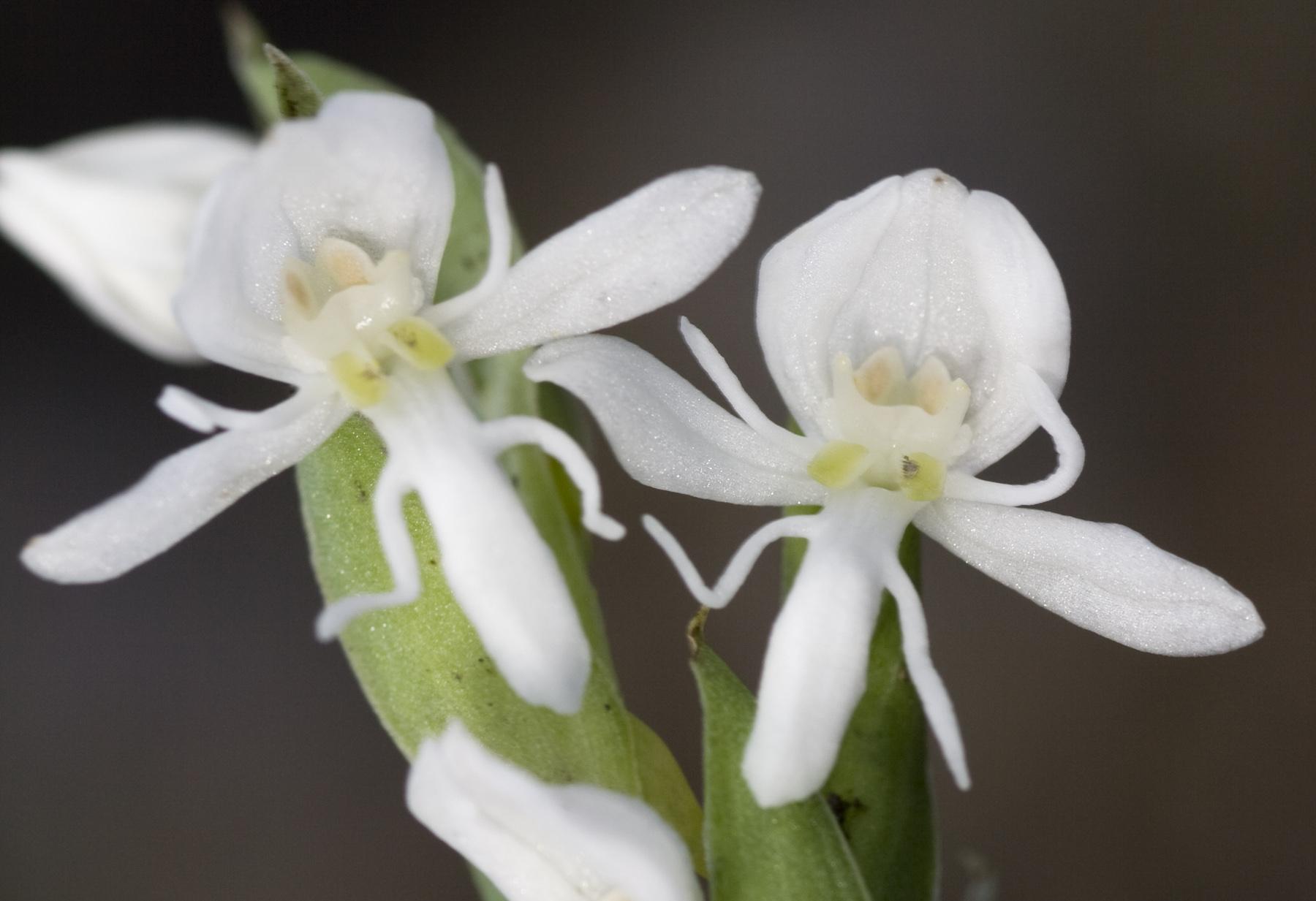Habenaria
|
Family: Orchidaceae |
Herbs perennial, terrestrial or semiaquatic, often rather succulent. Roots scattered along basal portion of stem, both slender and tuberous, fleshy; tuberoids usually spheroid. Stems: leaves basal, abruptly reduced to bracts or scattered, gradually reduced toward inflorescence. Leaves several, alternate, ascending to spreading, conduplicate, bases sheathing stem. Inflorescences terminal, lax to rather dense spicate racemes; bracts large and foliaceous to reduced. Flowers few to many, resupinate, pedicellate, sometimes showy; petals 2-lobed, lateral lobe on abaxial margin; lip 3-lobed, spurred at base; pollinaria 2; pollinia 2; viscidia free; stigma with 2 fleshy processes flanking or encircling mouth of spur. Fruits capsules, ellipsoid. A recently identified species, Habenaria macroceratitis, is described but not fully treated here.
Sep and lateral pet ±alike in form and color or the pet smaller, in our spp. the pet usually connivent with the dorsal sep to form a hood over the column, the lateral sep spreading or recurved; lip linear to ovate or obovate or 3-lobed, entire to toothed or fringed, prolonged backward at base into a spur; column short, capped by the broadly sessile anther; pollen-sacs 2, commonly separated by connective tissue or by part of the stigma, each containing a clavate (seldom bifid) pollinium attached at its narrow end to a usually ±exposed viscidium; perennial herbs, often from a fascicle of fleshy roots, the erect stem with basal or cauline, alternate lvs and a terminal spike or raceme. 500+, cosmop. (Coeloglossum, Gymnadeniopsis, Limnorchis, Piperia, Platanthera) Hybrids are fairly frequent, in spite of modal differences in pollinators. Gleason, Henry A. & Cronquist, Arthur J. 1991. Manual of vascular plants of northeastern United States and adjacent Canada. lxxv + 910 pp. ©The New York Botanical Garden. All rights reserved. Used by permission. |

